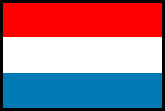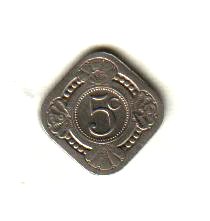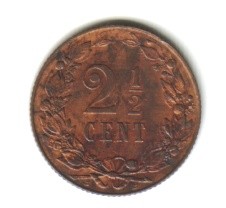





|
|
* See also my WANT LIST,(wensen lijst) at the end of this page.*
=============================================================================
|
|
I started collecting coins many years ago, when still at school in The Netherlands. My love for history and my inquisitive mind, I quess would have been the things responsible for the beginning of my coin collection, a couple of square 5 cent pieces. Who were the people who handled these coins before I had them, what did they look like? When I discovered that each country had their own currency, I had to have some of them. Throughout my school years in The Netherlands I was able to increase my collection, by swapping coins for anything I could lay my hands on. I remember one day the Headmaster of our school in Hengelo (Mijnheer Klein Bussink) got to hear about my coins, he asked to see them. He must have been impressed , because the next day gave me a 1614 2 stuiver silver coin from Trajectum. ( Utrecht ) It is still one of my favored coins in my collection.When our family left The Netherlands for Australia I did dispose of some of my coins. But kept some who became the heart of my collection. But in a new country, new coins to collect. We were fortunate to have, still 2 years of pennies and shillings etc, before the introduction of the decimal currency in 1966. There was a lull for many, many years in adding to my collection, although whenever I did see a coin shop I would always have a look. Around October 1998 , I started to get serious about my coins again, a Collector Shop opened up in our small town of Nanango in Queensland. As usual I would look, I did and found many Dutch coins, many of them were like the coins I had and disposed of, before I left to come to Australia. The coin bugg got me this time. My collection todate consist of coins from WILLEM I , II and III, WILHELMINA and Dutch Provincial coins. I collect by type, rather than by date, and I am always looking for new coins to add to my collection.
What do I do for a living? After many years in retailing and servicing sewing machines in Mackay Nth Queensland. Australia. I am still involved part time in the industry. And, along with my wife Ruth, we also operate a cattle stud operation.. We breed Brahmans and Romagnolas, and we have some of the best blood lines available in Australia. Cattle prices have been very disappointing over the last few years, and do not seem to be improving, hobbies like coin collecting etc, are a great diversion from the pressures and problems we all faces in our daily lives.
Me and the Girls.

=====================================================================================
|
|
THE STUIVER

One of the most intriguing piece of Dutch currency this century has been the square 5 cent (stuiver) copper/nickel coin, first minted in 1913.
It replaced the round 5 cents from 1907-1909.
Why, square and not round like all the other Dutch coins before it.
During the 19th century the small silver 5 cent had been reduced in size in 1848 from 15mm to a diameter of only 12,5 mm.
Its weight now was only 0.685 gram. Because of its small size and light weight it was easily lost and misplaced.
But the government persisted with it until 1887. The total mintage of this pretty but small 5 cent was 6.303 000.20 years later the shortage of 5 cent pieces was overcome by the issue of a new 5 cents almost 6 times its weight.
The coin soon came to be know as the Evening Quarter, (Avond kwartje) Its size of 18mm was only 1 mm less than the current 25 cents. (Kwartje) So especially at night it was rather easy to make 20 cents by substituting a 5 cent coin for the 25 cents. After a 3 year minting from 1907 until 1909 the Evening (Kwartje) was discontinued.
The wait for the new 5 cents stuiver lasted until 1913, when my favored Dutch coin the square 5 cent made its entry.
From 1913 until 1940 the total mintage was 56 million.
|
|

Another Dutch coin with an interesting tale is the bronze 2-1/2 cents or"1/2 stuiver" also known as the" plak" Its size was slightly larger than the Dutch 1/2 Gulden and the gold 10 Gulden."Gouden tientje".
It was first issued in 1877, and as it seems it was destined to replace the tiny silver 5 cent coin, in as much that during the next 29 years 34 million were produced against only three hundred thousand 5 cent coins in that same period..
But it was never a popular replacement, it was much larger than the 5 cent, and it was nearly 7 times its weight. Although some unscrupulous people did like it. Why? It was nearly the same size than the, gold 10 guldens( Gouden Tientje), just a little larger, but thinner. In uncirculated condition, it only needed a little extra polishing or some colouring, to make an unsuspected victim believe it is a "Gouden tientje". A profit of 400% was made with this trickery.
It took a few years before the government stepped in, from 1914 until 1929 the press dies were blackened to give the coin a darker appearance, and it did, from dark brown to black. The Dutch liked it even less, it was then given its nickname "plak" meaning a piece of choclat,( or as the Dutch would say "een chocolade plakje") referring to its choclaty colour.When the "halve stuiver" appeared in 1877, 2-1/2 cents was a lot of money. Consider that a man.s weekly wage was less then 2 Guldens, a stuiver was not far off the hourly rate, that is, if they worked 40 hour week, but many worked much longer. By the turn of the century, what could be bought with a "plak"? For many years it did cost 2-1/2 cents to post a letter. De price of a daily newspapers was 2-1/2 cents. Admission to the footbal, and other entertainment, you had 2-1/2 cent in your pocket you were in. The 2-1/2 cent was a coin of convenience.
For years the lady of the house always kept one or two "plakjes" away from sticky hands, they were kept for the gas meter, 2-1/2 cents would buy 1 cubic meter of gas. And woe to anyone who touched her gas meter money. It was rumored that to curtail the use of household gas during World War 2, the German occupation forces stockpiled the 2 1/2 cent, so as to minimize the use of household gas a move which was only partly succesful.
With the demise of the 1/2 cent denomination it also meant the end of the " plak". The last bronze 2-1/2 cent was minted in 1941.In its 64 year history a total of 95. 4 million were produced. In addition during the early years of World War 2 a zinc version was also put intio circulation. In 1941 27.8 million additional halve stuivers,were minted in the United States. An additional 200 000 were produced in 1942, but on government orders, they were all to be melted down, so the story goes, but about 30 are known to have survived. The value today of just one zinc 1942 2-1/2 cent in EF is about 12 000 guldens or $ 6000.- US. The Dutch 2 1/2 cent is an intruiging coin to collect, in its lifetime of 64 years it is produced in 22 mint years. Collect all the bronze 2 1/2 cents graded F, it would cost around $120.00 US. In unc, it would be around $ 1000.- US. At any given time on the Dutch Verzamel.net ( in Dutch) several are put up for auction, at reasonable prices.
(More "DID YOU KNOW" stories to
follow soon.)
I AM LOOKING FOR THE FOLLOWING COINS FROM THE NETHERLANDS:
Dutch provincial coins:
Overijssel duits and stuivers.
Gelderland 2 stuivers.
West Friesland duit.
Friesland duit, oord and stuivers.
Other provincial coins also wanted.
5 cents from Willem III,
any year. 5 cents from Wilhelmina, any year up to 1948. 5 and 25 cents
Willem I.
1/2 Gulden Wilhelmina
any year from 1898 till 1918.
I AM ALSO LOOKING FOR:
Dutch books and magazines
about coins. (Nederlandse boeken en tijdschriften van munten)
Picture postcards and books
about: Overijssel, Twente and Hengelo or any postcards with Dutch scenes,
windmills tulips etc.
AUSTRALIAN pre decimal Coins:
pennies, shillings, florins, crowns etc.
I will consider trading or I will
buy.
If you are a collector of whatever,
contact me, I may be able to obtain additions for your collection here
in Australia.
Go back to
beginning of this page
Prices quoted are in Australian
Dollars.
Payment accepted in the following
currencies. Australian Dollars, US Dollars and Dutch Guldens.
Presently 1 Australian Dollar
is $0.60 US and Fl. 1.38 in Dutch Guldens.
Because of the high bank charges
to clear bank checks from overseas, the prefered payment is cash
Postage cost is the actual
postal charge.No extra charge for packing. Postage on books within
Australia and Overseas is not cheap, but I always endeavor to send them
the most economical way possible, this is either economy post or
seapost. Insurance is available. All coins and postcards are send via airmail,
unless otherwise requested.
|
|
|
|
|
|
|
|
|
. |
Henk Pool.
P.O BOX 711
NANANGO. Qld. 4615. Australia.